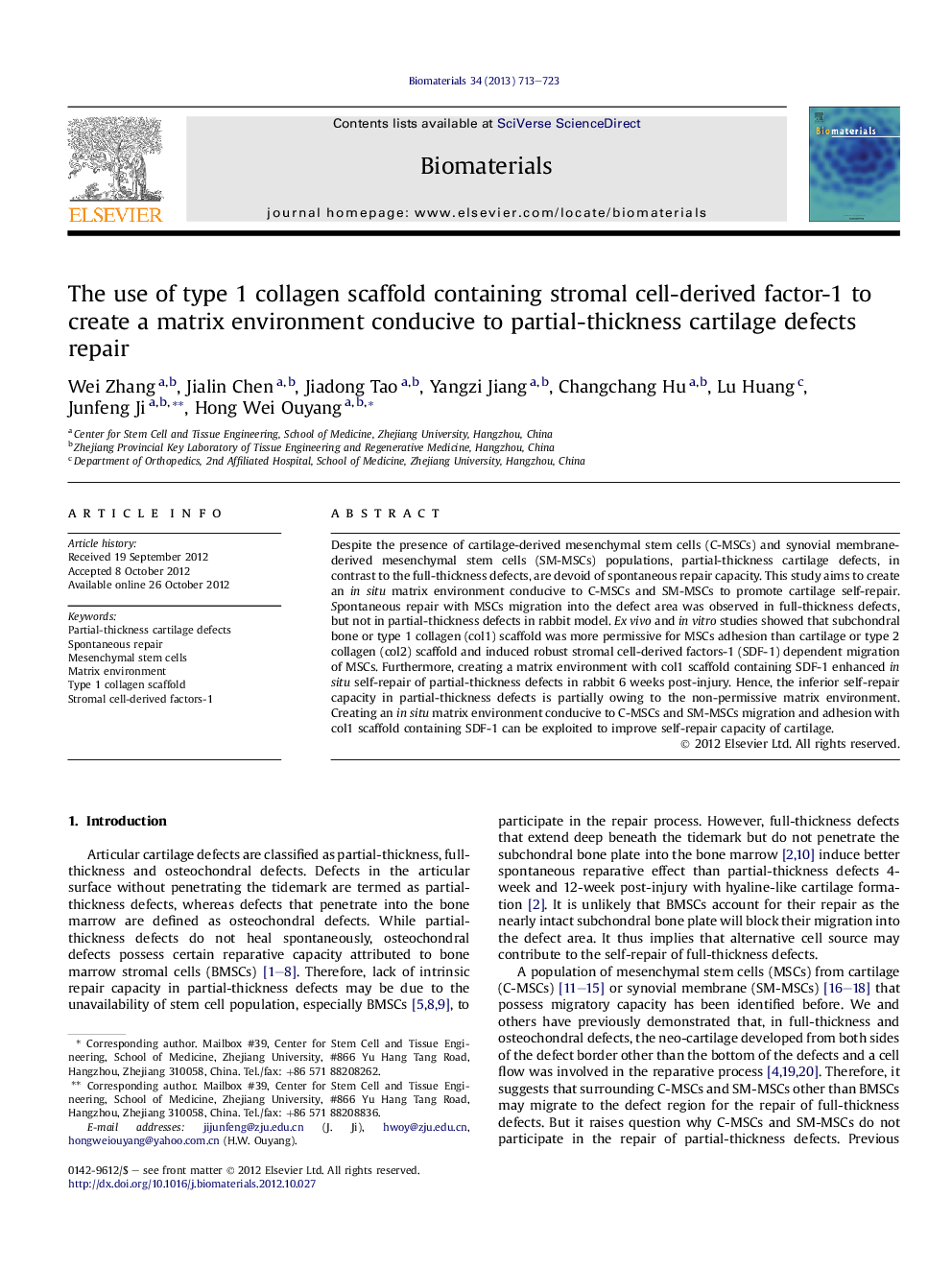| کد مقاله | کد نشریه | سال انتشار | مقاله انگلیسی | نسخه تمام متن |
|---|---|---|---|---|
| 6849 | 522 | 2013 | 11 صفحه PDF | دانلود رایگان |

Despite the presence of cartilage-derived mesenchymal stem cells (C-MSCs) and synovial membrane-derived mesenchymal stem cells (SM-MSCs) populations, partial-thickness cartilage defects, in contrast to the full-thickness defects, are devoid of spontaneous repair capacity. This study aims to create an in situ matrix environment conducive to C-MSCs and SM-MSCs to promote cartilage self-repair. Spontaneous repair with MSCs migration into the defect area was observed in full-thickness defects, but not in partial-thickness defects in rabbit model. Ex vivo and in vitro studies showed that subchondral bone or type 1 collagen (col1) scaffold was more permissive for MSCs adhesion than cartilage or type 2 collagen (col2) scaffold and induced robust stromal cell-derived factors-1 (SDF-1) dependent migration of MSCs. Furthermore, creating a matrix environment with col1 scaffold containing SDF-1 enhanced in situ self-repair of partial-thickness defects in rabbit 6 weeks post-injury. Hence, the inferior self-repair capacity in partial-thickness defects is partially owing to the non-permissive matrix environment. Creating an in situ matrix environment conducive to C-MSCs and SM-MSCs migration and adhesion with col1 scaffold containing SDF-1 can be exploited to improve self-repair capacity of cartilage.
Journal: Biomaterials - Volume 34, Issue 3, January 2013, Pages 713–723